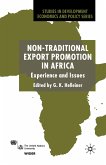Kenya's economy is market-based, with some state-owned infrastructure enterprises, and maintains a liberalized external trade system. The economy s heavy dependence on rain-fed agriculture and the tourism sector leaves it vulnerable to cycles of boom and bust. The agricultural sector employs nearly 75 percent of the country s 37 million people. Half of the sector s output remains subsistence production. Kenya s gross domestic product (GDP) growth rate declined continuously from a peak of about 6.5 percent per year during the first decade after independence to less than 4 percent per year in the following decade, to only about 1.5 percent per year during the 1990s. It has experienced an upturn to more than 5 percent per year since 2004. Several decades of declining economic performance, combined with rapid population growth, translated over time into reduced income per head, increased poverty, and worsening unemployment. Between the 1970s and 2000, the number of Kenyans classifiedas poor grew from 29 percent to about 57 percent.
Bitte wählen Sie Ihr Anliegen aus.
Rechnungen
Retourenschein anfordern
Bestellstatus
Storno








